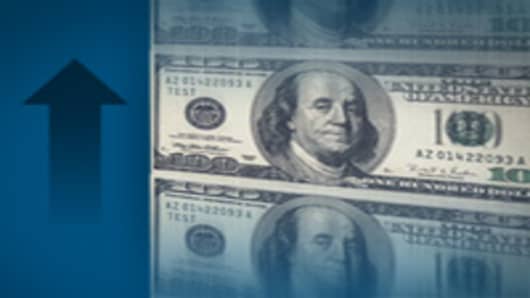Strong U.S. producer price growth in March may bode ill for Wednesday's reading on inflation at the broader consumer level, even though the two measures do not always move in lock-step.
U.S. producer prices advanced at a worrying rate of 1.1 percent last month on the back of surging energy costs, according to a report released on Tuesday, raising concerns that the Federal Reserve could be stoking inflation with its campaign of aggressive interest rate cuts.
The fact that underlying producer price growth, which subtracts food and energy prices, was more subdued did little to mitigate inflation concerns, and the report led some analysts to raise their expectations for consumer prices while the marketplace trimmed bets on a big Fed cut this month.
"The trade-offs available to the Fed become less and less appealing," said Richard Iley, senior economist at BNP Paribas, a corporate bank and investment bank, in New York. "There is more evidence of the cost-push inflationary pressures, which are continuing to hit the economy and which to some extent are complicating the Fed's task of framing appropriate monetary policy."
BNP said it was raising its prediction for March consumer price growth to a 0.3 percent monthly rise from its previous 0.2 percent, even while it acknowledged that producer prices often send misleading signals for CPI.
In particular, it cited the strength in residential electricity and natural gas prices, components which "do tally up well with their CPI equivalents," a BNP research note said.
Residential natural gas prices were up 4.2 percent on the month and residential electric power rose 1.1 percent.
Inflation vigilantes may take some comfort from the fact that BNP's forecast is still below economists' median forecast of 0.4 percent, according to a Reuters poll.
However, that is cold comfort for investors hoping for another big dose of monetary easing from the Fed this month to help shore up the recessionary economy.
Annual consumer price inflation is expected to remain elevated at 4.0 percent.
Following the PPI data's release, traders trimmed bets on a half-percentage-point rate cut at the Fed's April 29-30 meeting -- but they still factor in a quarter-point reduction.
"Inflation is everywhere within this report," Bear Stearns said in a research note.
"Fed policy is stuck between the rock of recession and the hard place of rising inflation pressures." Though PPI is not great at predicting the outcome for consumer prices for any particular month, some of its components bear watching.
"The strong readings on food and natural gas prices suggest some upside risk to our forecast of a 0.3 percent gain in consumer prices in Wednesday's CPI report," analysts at Barclays Capital said in a note.
"While the translation between the PPI and CPI measures of these prices is not direct, there is a significant correlation, and both categories were firmer than expected." Research firm Action Economics raised its projection for March CPI to a 0.4 percent increase, from its previous call of 0.3 percent.
Another area economists watch is intermediate materials excluding food and energy, which jumped 1.1 percent higher in March.
Analysts say it can be a useful indicator of future direction if producers are able to pass their price increases on to consumers.
"This would be a bit of a leading indicator to the CPI," said Keith Hembre, chief economist at FAF Advisors in Minneapolis.


